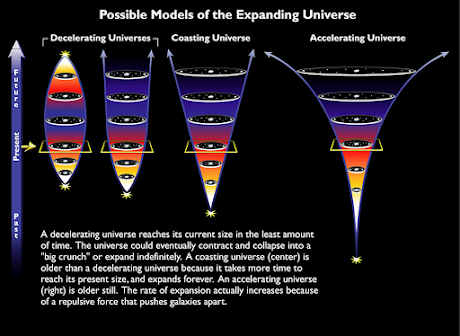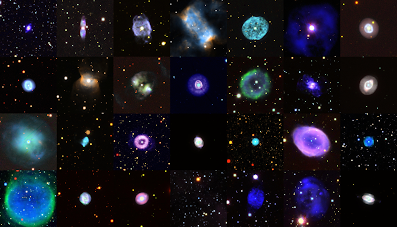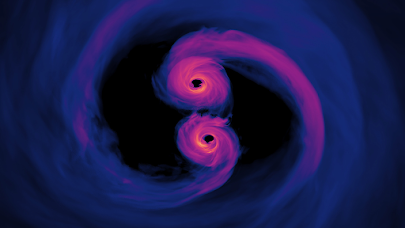In all these years, since its first publication on November 24, 1859, Darwin's phenomenal work, On the Origin of Species by means of Natural Selection, has undergone many modifications. Subject to the standard tests of a scientific theory, Darwin's work has retained its ground as one of the undefeated and unshakable theories in all of science. Although not instantly, in time, Charles Darwin and the co-discoverer Alfred Russel Wallace had to be recognized as the founding fathers of evolutionary biology. The essence of Natural Selection lies in the fact that every living organism we see today, every unique and visibly distinct organism that walks upon the Earth, must have descended from a Last Universal Common Ancestor (LUCA), i.e., to say, evolved from a primal form into which life itself dawned in some remotely distant epoch, following the general laws of Nature. At first look, one might refute Darwinian evolution because it does not explain the origin of the first living forms. In their desperate attempt to challenge the Darwinian mechanism, most people tend to forget that the avant-garde naturalist never set out to explain the origin of life but its diversity. Even the Miller-Urey experiment could only offer a satisfactory glimpse into the chemical origin of the first complex organic molecules formed from a mixture of water, ammonia, methane, and hydrogen under electric discharge. But how ''non-living'' atoms of the periodic table, individual species of carbon, nitrogen, oxygen, phosphorus, magnesium, iron, and viz., spontaneously arranged themselves together into the first ''living'' thing is enshrouded in mystery.
Just like we don't know how life became ''life'', our ideas regarding the universe's origin are no less nebulous. The Big Bang Model of the universe alongside Cosmic Inflation does no justice in explaining what happened before t = 0 or if there was any ''before". Foraging through years of observational data, we can zero in on the fact that 13.8 billion years ago, our universe began from an initial space-time singularity. Some of our finest physicists, in the past and in present, have come up with dozens of theories. While not all of them fall in line with standard scientific testability, one by one, we are learning to connect the dots. Perhaps The Theory of Everything, if we ever get to discover it, might answer all our questions — how the universe began, how life started, where we headed, and what is our final destination, if there is any. In this day and age, we do not have all the answers. It is not possible, not within the domain of science, to foretell how our future progeny might look as we all evolve. In this regard, the future of life seems rather woolly. However, if you ask for a picture of the future universe 10, 20, 50, 100, or 1,000 billion years from now, the following paragraphs can give you a rough sketch. But remember, there are too many unknown factors to consider, knowledge of which might significantly alter current speculations.
 |
Possible Models of the Expanding Universe. Depending on the form of dark energy and dark matter, the universe can expand forever at an unprecedented rate, thereby tearing apart the fabric of space-time by pulling individual atoms an infinite distance apart - the Big Rip scenario. The universe may as well collapse upon itself - the Big Crunch. Finally, there is the third possibility - the Heat Death. As per the latter model, the universe will continue to tend toward ultimate thermodynamic disorder, with space and time, as we know it, becoming meaningless. Image Credits: NASA & ESA |
Let's begin with the Sun. Every second, inside the blazing hot core, at temperatures above 15 million degrees Kelvin, the Sun transmutes 600 million tons of ionized hydrogen into 596 million tons of helium and the residual nuclear material into electromagnetic energy. With slight variations, the Sun has remained the same for the past 4.5 billion years since its birth, and from what it seems, it will continue to be the same for the next 5 billion years. A typical star spends most of its life in stable hydrostatic equilibrium by burning away nuclear material and liberating energy, thereby supporting itself against gravitational collapse due to its own weight. However, stable equilibrium does not mean it will remain strictly unchanging. Over 4.5 billion years, the Sun has grown radially by 11 %, corresponding to a 30 % increase in luminosity (brightness), and continues getting brighter at 1% per 110 million years. While the Sun burns away its limited store of hydrogen material, its core becomes enriched with helium. When hydrogen depletes completely, core-nuclear fusion momentarily ceases in the case of Sun-like stars, which are not sufficiently massive to initiate core-helium fusion and continue being in the Main Sequence. At this juncture, the star contracts. The resulting inward collapse compresses the hydrogen surrounding the core and initiates the shell-burning of hydrogen. This shell-burning causes the Sun to expand enormously, hundreds of times its initial radius, and it migrates away from the MS branch of the H-R diagram into the Red Giant Branch (abb. RGB). At 7.9 billion years from now, when the Sun's radius expands by 256 times, it will engulf Mercury and Venus and not likely spare Earth and Mars. But before that, somewhere along 6.2 - 6.6 billion years, the helium-rich core of the Sun will ignite into a helium flash, a runaway thermonuclear process that will turn the helium-rich core into a carbon-oxygen white dwarf. Although no visible change will occur at the surface, at this point, the Sun's core will shine brighter than the combined luminosity of the Milky Way Galaxy. At 8 - 10 billion years into the future, the Sun will finally explode in a brilliant planetary nebula, leaving behind its core as a carbon-oxygen white dwarf. With no further nuclear fusion, the remnant white-dwarf Sun will continue to lose its heat to the coldness of space till it cools down sufficiently so that it emits no more heat or light. Theoretically, this could be the ultimate evolutionary stage for the Sun and Sun-like stars. Such a degenerate object is called a black dwarf. Astrophysicists think that currently, no black dwarf exists in the universe because the typical timeframe needed for a white dwarf to cool down tops quadrillions of years.
 |
A red giant Sun and a charred Earth, 5 - 7 billion years into the future. What Carl Sagan called out as the Pale-Blue dot will ultimately become nothing less than the dead lump it was when it first accreted from the solar nebula. At that time, Earth had the prospect of evolving future life. But this time, with the red giant Sun boiling away its liquid water oceans and runaway greenhouse effect raising surface temperatures high enough to melt lead, life has no way but to accept death unless otherwise.
Image Credits: Public Domain, via Wikimedia Commons |
If Earth doesn't get engulfed by the red giant Sun, then 10 billion years into the future, our providential blue-green marble will look as lifeless as it was when it first accreted from the solar nebula. With the Sun's increasing luminosity, Earth's temperature will steadily rise to the point where the oceans themselves will boil away, causing a runaway greenhouse effect like Venus, which will bake Earth's surface and asphyxiate whatever life might exist into the future. Ironically, the same Sun that brought life to Earth will be taking it away. Since every dark cloud has a silver lining, the expanding red giant will push the habitable zone towards Saturn and beyond, allowing new life to breathe for a flying moment in distant lands.
Even the most stable dynamic systems can fall into complete chaos, given the length of time. The solar system avoids being an exception. Between 100 - 200 million years into the future, the solar system will begin to look quite different because Mars's moon Phobos will be ripped apart into a thin ring surrounding the red planet. Deimos will likely fly away. With Mars getting a ring, the solar system's jewel, Saturn, will lose its glorious set due to dynamical effects. Life on Earth will continue to wax and wane in response to geophysical changes from pole reversals to tectonic plate shutdowns across the globe until the planet becomes inhospitable for life as we know it. Unless our future generations settle around a different star, life has tenure for the next 4 billion years at the highest. The solar system will be there for billions of years after the Sun explodes into a planetary nebula. Considering certain factors, at some point, Earth and Mars, if they survive the RGB Sun, might get tidally locked with the Sun. The moon might also do the same with the Earth. With time, the planetary orbits will decay gravitationally, and perturbative effects will eventually throw the remaining planets into escape orbit.
Every single star and stellar system share the same common fate. Their parent star eventually explodes in a planetary nebula or an intense supernova, leaving behind a white dwarf, neutron star, or a black hole surrounded by an expanding cloud of luminous gas. The last stars to survive will be the tiniest red dwarfs, for being a lot smaller, they can harness their nuclear energy for a considerably extended length of time, stretching up to hundreds of billions if not trillions of years. As a figure of speech - ''What goes up must come down''. Hence, 100 - 200 trillion years into the future, new star formation will be a thing of the past since no molecular hydrogen will be left behind to create new stars, and with the red dwarfs, in the fullness of time, exploding in planetary nebulae, starlight as we know it, will cease to exist forever. The universe will once again plunge into darkness. At this juncture, the universe will officially enter the Degenerate Era from the present Stelliferous Era.
 |
One by one, all stars will fade away from the universe, exploding in titanic supernovae, spilling their so-called enriched guts, heavier elements like carbon, nitrogen, calcium, iron, etc., and leaving behind white dwarfs, neutron stars, or black holes as the last surviving member. With no molecular hydrogen left, no new stars will ever form, and the universe will be without starlight for the rest of eternity. Image Credits: Public Domain, via Wikimedia Commons. |
Into the Degenerate Era, 10¹⁵ - 10³⁹ years, the universe will become littered with remnants of long-gone stars, white dwarfs, black dwarfs, neutron stars and black holes, failed brown dwarf stars that never had had the chance to ignite and rogue planets kicked into hyperbolic trajectories due to gravitational perturbations from close encounters with wandering star systems. Contrary to what it sounds, the universe will continue to be intensely dynamic even in this epoch, with black holes lighting up as they suck in dead stars and rogue planets. The gravitational waves emitted from black hole mergers will rush across at the speed of light, trying hard to transfer the information from one corner to another of an ever-expanding universe. A collision between brown dwarfs will still create accidental new stars, while neutron star mergers and white dwarf mergers puncture the abysmal darkness with ultra-bright supernovae. According to the Standard Model, protons are the most stable atomic (baryonic) species and do not further decay into lighter subatomic particles. But beyond the Standard Model, some Grand-Unified-Theories (GUTs) require protons to have a half-life of 10³¹ -10³⁶ years, after which they decay into a positron and a neutral pion where the latter itself decays into two gamma-ray photons. If proton decay occurs, no speck of matter will survive 10³⁶ years into the future. With all matter wiped out of existence, black holes will be the last surviving entities in this decaying universe as the universe enters the Black Hole Era, 10⁴⁰ - 10¹⁰⁰ years from now. However, as Stephen Hawking showed, not even black holes can escape oblivion as they must wear off through the decay of Hawking radiation. Whether proton decay occurs or not, as per the heat death scenario, beyond 10¹⁰⁰ years, the universe will settle into its final evolutionary stage, the Dark Era.
 |
If any future civilization manages to survive 100 trillion years into the future, they would have to seek refuge around black holes. With stars gone, the only energy source left will be black holes unless they devise some mechanism to tap into the vacuum energy of space-time.
Image Credits: NASA's Goddard Space Flight Center |
It is hard to say if there will be a big rip or big crunch or if the universe will keep heading towards thermodynamic heat death. If we achieve a complete theory of quantum gravity or something like that, we may be able to understand the underlying order in a new light. But as far as we can see, the universe will likely end in a Big Freeze or Big Chill, i.e., heat death. Heat death is a particular thermodynamic state of an isolated system wherein everything everywhere reaches the same temperature. Mere moments after the big bang, the universe had a temperature > 10³² K. 380,000 years later, when the universe cooled down to allow radiation to wander freely across the length of the observable universe, the CMBR formed with an average temperature of 3,000 K. The universe has been cooling since and will continue to do so and expand until it reaches a state of uniformity when everything reaches the same temperature (thermal equilibrium). As per the laws of thermodynamics, a so-called Carnot engine can operate only under a temperature gradient, i.e., as long as there is a difference in temperature between two constituent parts of a system, we can extract thermal energy to perform work. The process, in turn, generates entropy. With the universe reaching thermodynamic equilibrium (i.e., no appreciable temperature gradient exists), no more work can be performed in favor of entropy. With no new entropy being added to the system, the universe reaches its state of maximal disorder. Time as a progressive order of change ceases to carry any meaning as the universe becomes forever unchanging.
Into its final years, the universe will look relatively simple, filled with weak radiation and subatomic particles. As the dark era marches on beyond 10¹⁰⁰ years, the cosmos gets older and older till it can not age anymore, and the universe must ''sit there'' till quantum effects give birth to new inflationary universes. The highest estimated timeline for the birth of quantum-tunneled universes has been set at 10 to the power 10 to the power 10 to the power 56 years.
Weighing against such timescales, the universe we see today is not yet out of its crib.






Comments
Post a Comment